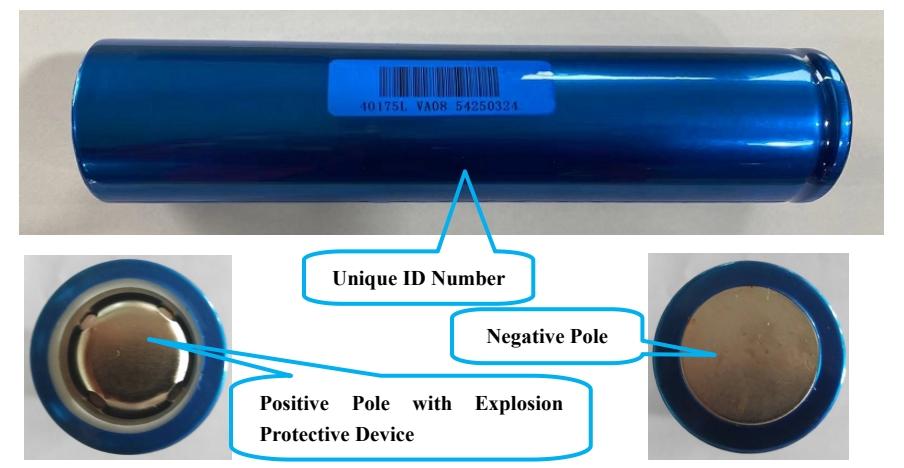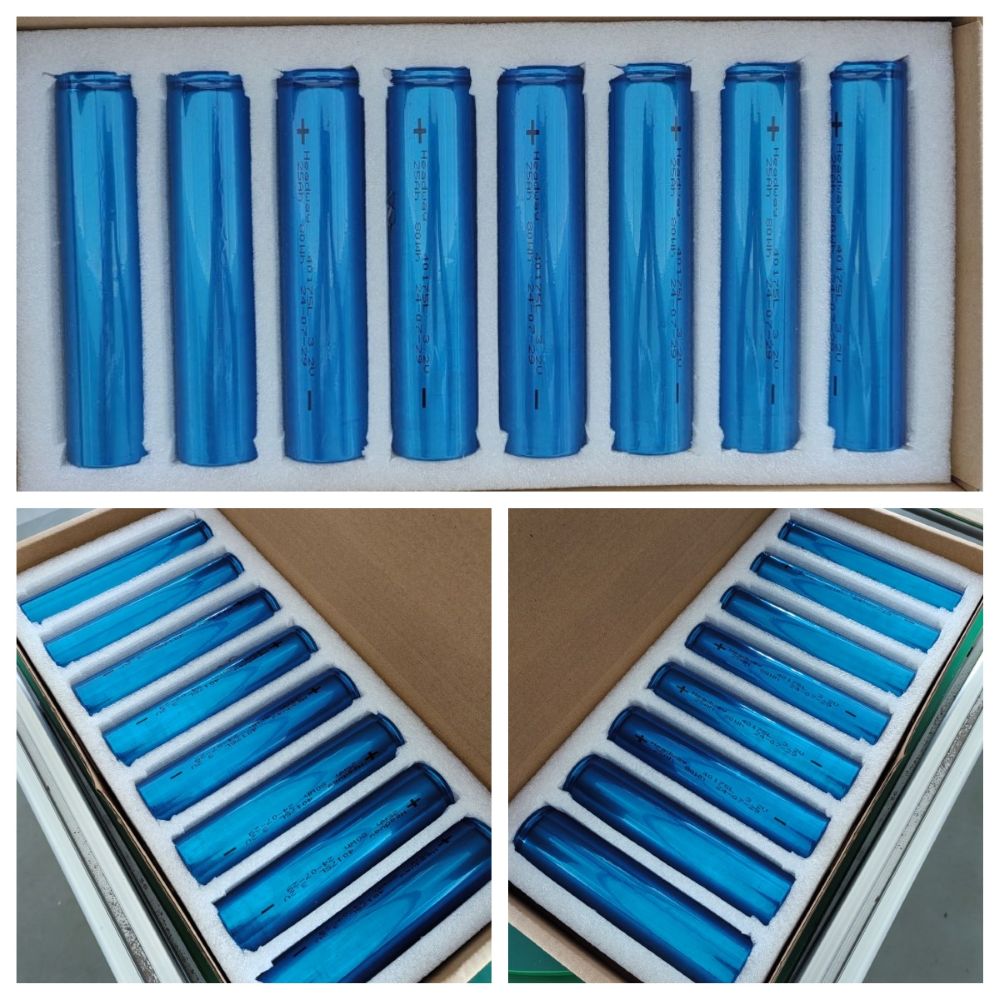40175L 25Ah 3.2V Cylindrical Lithium Ion LiFePO4 Battery Cells
40175L 25Ah 3.2V Cylindrical Lithium Ion Battery Cells for electric vehicles and solar energy applications.
- Category: LiFePO4 Battery Cell
- Tag: lifepo4 battery cell
40175L 25Ah/3.2V lithium-ion battery cells are suitable for household appliances, consumer electronics, electric bicycles/scooters, electric vehicles, electric wheelchairs, power systems, and solar energy storage systems.
Specifications
ITEM | SPECIFICATION |
Nominal capacity | 25Ah @ 0.2C |
Minimum capacity | 24.5Ah @ 0.2C |
Nominal voltage | 3.2V |
Max Charging voltage | 3.65 ±0.05 V |
Discharge ending voltage | 2.5 ±0.05 V |
Charge current | Standard charge: 0.5C Max charge: 2C when T≥10 OC Max charge: 1C when 10 OC≥T≥0 OC Max charge: 0. 1C when 0 OC≥T≥-10 OC |
Discharge current | Standard discharge: 1C Max continuously discharge: 3C Max instant discharge: 6C |
Recommended charge and discharge cell surface temperature | Charge: 0~45 OC Discharge: -20~60 OC |
Maximum allowable charge and discharge cell surface temperature. Charging and discharging at these conditions will shorten cell cycle life. | Charge: 60 OC Discharge: 75 OC |
Humidity range | 0~90%RH (none condensing) |
Internal resistance | ≤4mOhm (AC Impedance, 1000HZ) |
Cell dimension | Height: 176.0 mm Max Diameter: 41.0mm Max |
Weight | ~520g |
Energy density | 152Wh/kg |
Cell bar code and appearances


Cell dimensions

Electronic performance
ITEM | CRITERION | |
Discharge rate capability | discharge capacity at 1C | ≥24Ah |
discharge capacity at 3C | ≥23.2Ah | |
Cycle life | discharge capacity of 3000th cycle @100%DOD | ≥20Ah |
High-Low temperature discharge performance (0.5C discharge) | discharge capacity at -10℃ | ≥20Ah |
discharge capacity at 0℃ | ≥18.7Ah | |
discharge capacity at 60℃ | ≥24.5Ah | |
Storage performance | residual capacity after 28d storage | ≥24Ah |
recover capacity after 28d storage | ≥24.5Ah | |


Warning in handling the lithium-ion cell
To prevent the possibility of the cell from leaking, heating, or explosion, please observe the following
precautions:
· Don’t immerse the cell in water;
· Don’t use and leave the cell near a heat source such as a fire or heater; When charging, use a cell charger specifically for that purpose;
· Don’t reverse the positive and negative terminals; Don’t discard the cell in fire or heater;
· Don’t connect the cell to an electrical outlet directly; Don’t discard the cell in a fire or heater;
· Don’t connect the positive and negative terminals directly with metal objects;
· Don’t transport and store the cell together with metal objects such as necklaces, and hairpins; Don’t directly solder the cell;
· Don’t pierce the cell with a nail or other sharp object;
· Don’t leave the cell with low SOC for a long time, it should keep the cell with around 50% for long-term storage (less than 6 months). Should charge the cell to 50% SOC after each 6 months.



